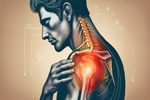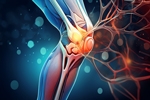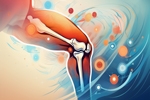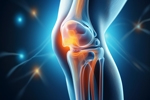Home »
Blog » Pain Management
| Stem Cell, PRP, Acupuncture in Queens & Long Island, New York
Pain Management | Stem Cell, PRP, Acupuncture in Queens & Long Island, New York
Struggling with persistent shoulder pain? PRP therapy offers a cutting-edge, non-surgical solution that harnesses the body’s natural healing abilities. By injecting concentrated platelets into the affected area, PRP stimulates tissue repair, reduces inflammation, and enhances joint function. Ideal for conditions like rotator cuff injuries, tendonitis, and osteoarthritis, PRP therapy is a safe and effective alternative to surgery. Learn how this innovative treatment can help you regain mobility and live pain-free.
Read more
Rotator cuff tendinitis is a common cause of shoulder pain, often resulting from repetitive overhead motions, aging, or sports injuries. This condition involves inflammation of the tendons, leading to discomfort, weakness, and limited mobility. Early intervention with physical therapy, pain management techniques, and lifestyle adjustments can help prevent further damage. In severe cases, treatments like corticosteroid injections, PRP therapy, or surgical repair may be necessary. Understanding the causes, symptoms, and available treatments can help individuals manage pain effectively and restore shoulder function.
Read more
Your shoulders play a crucial role in mobility, stability, and overall upper body strength. Whether you're recovering from an injury, preventing pain, or enhancing athletic performance, strengthening your shoulders is key. This guide explores effective exercises, ergonomic tips, and pain prevention strategies to improve shoulder health and function. Learn how to build resilience in your shoulders with simple yet powerful techniques to keep them strong and pain-free.
Read more
Cortisone injections offer effective relief for shoulder pain by reducing inflammation and improving joint mobility. Whether caused by arthritis, bursitis, rotator cuff injuries, or impingement, these injections provide targeted pain management. Learn how they work, what to expect during the procedure, and alternative treatment options to help restore shoulder function.
Read more
Shoulder pain is a common issue that can significantly impact daily activities, from lifting objects to simple movements like reaching or driving. The shoulder is a complex joint made up of bones, tendons, ligaments, and cartilage, making it prone to injuries and wear over time. Common causes of shoulder pain include rotator cuff injuries, tendonitis, bursitis, arthritis, fractures, and nerve impingements. Understanding the root cause is essential for effective treatment, which may involve physical therapy, pain management techniques, or, in severe cases, surgery. Early diagnosis and proper care can help restore mobility and reduce discomfort.
Read more
Knee pain can limit mobility and affect daily life, but physical therapy offers an effective, non-invasive solution. By reducing inflammation, strengthening muscles, and improving movement patterns, physical therapy helps restore function and prevent future injuries. From stretching and strengthening exercises to low-impact aerobic conditioning, targeted therapy can provide lasting relief. Whether managing arthritis, recovering from injury, or avoiding surgery, physical therapy plays a key role in knee pain treatment. Discover how a structured program can help you regain mobility and improve your quality of life.
Read more
Radiofrequency neurotomy of the genicular nerves is a minimally invasive procedure designed to reduce chronic knee pain by disrupting pain signals. Using fluoroscopic guidance, a physician injects local anesthetic and applies radiofrequency energy to target the genicular nerves. This treatment is ideal for patients with knee osteoarthritis who cannot undergo or prefer to avoid joint replacement surgery. Many patients experience significant pain relief and improved mobility, with studies showing better outcomes compared to corticosteroid injections. Radiofrequency neurotomy offers a promising alternative for long-term knee pain management.
Read more
Knee osteoarthritis is a progressive condition that causes pain, stiffness, and swelling, affecting mobility and daily activities. While it worsens over time, early intervention with physical therapy, weight management, and targeted exercises can slow progression and improve joint function. Non-surgical treatments, such as PRP therapy, bracing, and pain management techniques, can help relieve symptoms. In severe cases, surgical options like osteotomy or total knee replacement may be necessary. Understanding risk factors, symptoms, and treatment options is key to maintaining mobility and reducing discomfort.
Read more
Staying active with knee pain may seem challenging, but the right exercises can improve mobility, strengthen muscles, and reduce discomfort. Low-impact activities like walking, water exercises, and targeted stretches help maintain joint flexibility while minimizing stress. Proper warm-ups, good footwear, and post-workout care like heat and ice therapy can also aid in pain management. With consistency, moderate exercise can lead to better knee function and less pain over time.
Read more
Hyaluronic acid injections, also known as viscosupplementation, provide a minimally invasive solution for knee pain caused by arthritis and joint deterioration. By replenishing the knee’s natural lubricating fluid, these gel injections help reduce pain, stiffness, and inflammation, often delaying the need for surgery. Many patients experience relief for up to six months after treatment. This safe and effective therapy enhances mobility, making it a valuable option for those struggling with chronic knee discomfort.
Read more
Love this Post? Spread the World
























